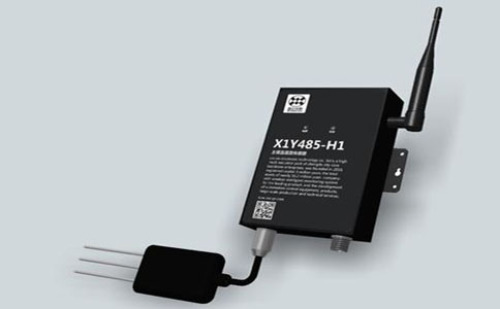The Role of Soil Temperature and Humidity Recorder in the Construction of Agricultural Internet of Things System
Introduction: In traditional agriculture, the way people obtain information on farmland is very limited, mainly through manual measurement. The acquisition process requires a lot of manpower and material resources. For example, tomato greenhouse cultivation base, CO2 concentration, temperature and humidity have a great influence on the growth of crops. , but basically follow the old method to observe and record the temperature and humidity, carbon dioxide concentration information; let the staff go to each greenhouse with CO2 detector to detect CO2 concentration, to open the fan, to open the side window, sunroof. This method does not waste manpower every day, and there are certain mistakes in manual monitoring. Such mistakes may cause major losses. Small Engine Iridium Spark Plug
Ignite Status:
Comparing with Normal Spark Plug, the flame od Iridium Spark Plug spread more frequently. Iridium Spark plug improve much more the ignitability and fuel economy.
Improve Acceleration:
With the 0.5mm center electrode, the acclerating performance improves obviously. The time difference to speed up would be shortened 0.7 to 1 second.
Improve Engine Starting:
With the powerful ignitability, the Iridium Spark plug can ignite the engine easily and make less cut off even under thin air and adverse environment.
Small Block Spark Plugs,Small Iridium Spark Plug,Ngk Small Iridium Spark Plug,Small Engine Iridium Spark Plug LIXIN INDUSTRIAL & TRADE CO.,Limited , https://www.jmsparkplugs.com
The use of a temperature and humidity monitoring system combined with a wireless sensor network can effectively reduce manpower consumption and impact on the farmland environment, and obtain crop environment and crop information. In modern agriculture, a large number of sensor nodes constitute a series of monitoring networks with different functions. Collecting information through various sensors can help agricultural production personnel to find problems in a timely manner and accurately capture the location of problems. As a result, agriculture has gradually shifted from a manpower-centric, production mode that relied on isolated machinery, to a production mode centered on information technology and software. This has led to the extensive use of various automated, intelligent, and remotely controlled production equipment. Promote the transformation of agricultural production methods.
In recent years, with the development of smart agriculture and precision agriculture, the application of Internet of Things technologies such as smart sensing chips and remote control systems in modern agriculture has gradually broadened. Monitoring crop irrigation, soil air changes, farm environmental conditions and large-area surface detection, collecting temperature, humidity, wind, atmosphere, rainfall, data on soil moisture, soil NPK content, and pH value Sensing technology is playing an increasingly important role in the development of precision agriculture, so as to achieve scientific monitoring, rational planting, help agricultural people to fight disasters, reduce disasters, improve the overall efficiency of agriculture, and promote the transformation and upgrading of modern agriculture.
Xin core compound soil temperature and humidity recorder is used in the agricultural internet of things monitoring system. The soil temperature and humidity sensor uses the United States advanced time domain reflectometry (TDR technology) for humidity measurement and can not only collect soil temperature and moisture content. Information, and in the process of probe manufacturing, special stainless steel processing is used to make the sensors buried in the earth more durable (ordinary sensor probes are buried in the earth and are prone to corrosion and rust and do not work properly). The soil temperature and humidity recorder has the advantages of convenient carrying, sealing and high precision, and is an ideal choice for measuring soil moisture and soil temperature. The modified products are suitable for water-saving agricultural irrigation, soil moisture monitoring, hydrology and water conservancy monitoring, greenhouses, flowers and vegetables, grassland pastures, soil rapid testing, plant cultivation, scientific experiments and other fields. With the advent of advanced and similar sensors, the development of smart agriculture is further based on its foundation. The basic functions are more solid and more secure.
In the field of modern greenhouse cultivation, the Internet of Things technology cares for the seedlings of crops. In this process, sensor devices such as soil temperature, soil moisture, air temperature, air humidity, and CO2 concentration detect physical environmental parameters. Through the system platform, the real-time monitored parameter variables are reflected in the automatic control process. Create the best growing environment.
In recent years, sensors have been transformed from traditional models to new types of development. The new sensors tend to be miniaturized, digitized, intelligentized, multi-functionalized, and networked. They not only promote the rebirth of traditional agriculture, but also play an increasingly important role in the agricultural field, and can lead to the development of a series of new industrial industries. Sensor technology is the new economic growth point in the 21st century.